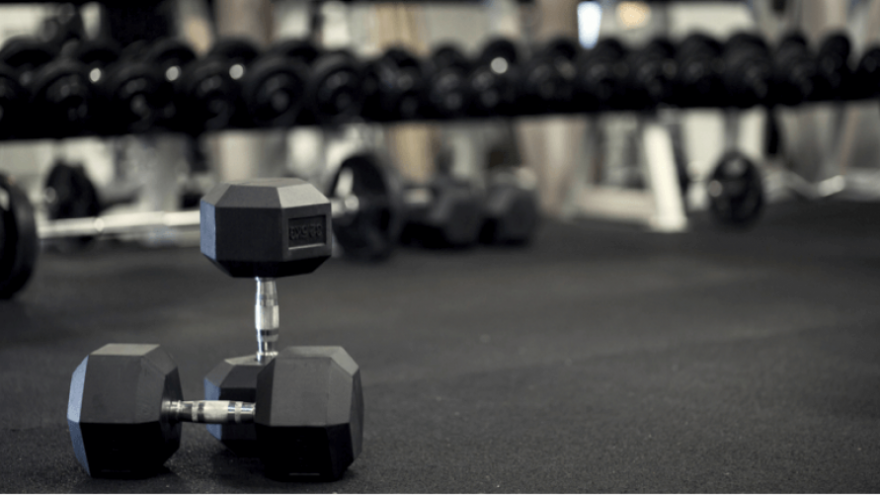The Importance of Weight Lifting for Distance Runners

Old school runners viewed weight lifting or training as something, which only body builders partook in. They were runners, and that was what they would do. Run!
Running miles and miles was just par for the course.
Runners run.
Cyclists’ cycle.
Swimmers swim.
Golfers golf.
Footballers football … okay, lets stop right there. This is getting weird.
However, you get my message, right?
And, sure, it worked. They focused on what their goal was and that was to run, whether it be 10 miles or a marathon. Just run.
Well, I’m here to say that it is absolute poppycock. Yes, I just used that word. It is such a lovely word. But, I digress.
TAKE A LOOK AT PROFESSIONAL SPORTS PEOPLE

If we glaze over the professional sports people of this decade, and then compare them to their predecessors from about 10 to 20 years ago, you will see that their builds have changed.
Think about Tiger Woods, and then take Vijay Singh. They have similar builds, and Vijay is 10 years plus older than Tiger. However, put that aside. Tiger has worked out. He has done more than just practice his golf swing. He has applied the art of weight lifting and strength training to his fitness regime. Vijay, and I stand to be corrected, but by the looks of it, has not. You can see, quite clearly, if you take Tiger’s build when he started out, and how he looks today. Worlds apart!
And, its not to say that Vijay hasn’t been as successful as Woods. But, the question of their longevity in their sports careers could be on the cards.

The benefits of including weight lifting or training into any sport has proved most beneficial. And, the same should apply to distance runners, in fact, especially, to distance runners. The strain on a long distance runners legs, as well as other muscle groups, after traversing elevation, camber, and not to mention just being on your feet for a long period of time, can detriment their run.

You only have to look at the body shape change, over the years, on professional long distance runners, to know that just aesthetically they are different, not to mention the ability to finish certain distances in record times.
Much like cross training, and other non-running activities, can benefit your running performance, so can a good dose of strength training. The literature and research conducted, shows us that running can be improved based on effectiveness of your running as well as your ability to push yourself to exhaustion. In addition, the lessening of possible injuries is increased drastically.
BULKING UP MYTH DEBUNKED

Many long distance runners worry that they will bulk up and hinder their run due to heavy legs and arms, but this couldn’t be further from the truth. Lean muscle is far more powerful than a body that can sustain distance. Stamina is not only all about muscle memory, which allows you to endure prolonged effort, but also about the quality of the muscles. Strengthen your muscles, as well as body for the purposes of running better and easier.
Including a good mixed weight lifting/training program in between your running regime needn’t be a tough ask. You probably are thinking to yourself, in order to include these extra workouts, I will have to forego a few runs, and you would be correct. And, then your next worry is that foregoing your runs here and there will affect your progress in the running department. But, that also isn’t true.
Research results give us this –
- Leg strength increased by 30%
- Running to exhaustion improved by 10 minutes
- V02 max was increased, on average, by 10%
- A decrease in injuries by 10 to 20 %, and in some they never experienced injuries again
INJURIES

It is no secret that consistent long distance running will deplete muscle mass, landing you up with lean, but short muscles. The word “hammies” comes up often in general runner’s convo’s and not for any other reason, other than they are either injured, tight, or just damn pained. Lets not get started on ITB, Achilles, and knee injuries.
Adding weight to your strength training will aid in keeping your muscles supple, strong and injury-free.
CORE

For you to keep your body upright for long periods of time, you need to have a strong core, and often this is where runners fail dismally. Next time you’re at a marathon, take a look at the runners as they finish off their last few kays. Their bodies are slightly bent over, heads down, toes grazing the tarmac.
Including core strength training with weights can seem like a real pain, but the good news is that you actually don’t have to do specific exercises, although trying out a few core exercises will add to the mix nicely. The simple inclusion of weight lifting into your training program will force you to engage your core muscles.
FATIGUE BUFFER

Have you hit the wall before? Of course you have. And most of that has to do with mental strength; however, there is the element of muscle fatigue. The fatigue that you put your muscles through with consistent weight training will teach your muscles to endure for longer like no ones business.
HOW MUCH?

So, you’ve decided you will give this a try. But, how often should you include weight lifting into your week?
To begin with, 2-3 times a week should be sufficient, at 1-hour sessions.
Begin with erring on the side of caution in terms of the amount of weight loading.
Keep it lean to begin with, and gradually, every week, increase the load by 10%. This is the same modus operandi you would apply to increasing your running distance. Only increase your run distance by 10% every week.
Anymore, from both ends, can result in an injury.
So, there you go. The proof is in the pudding though, and we just know you will eating that pudding over and over, once you start seeing the powerful results.
Latest Articles
 Is Running on a Treadmill Easier Than Running Outside?Runners have their own preferences, whether it is treadmill running, running outside on the road, or exploring trails. So...
Is Running on a Treadmill Easier Than Running Outside?Runners have their own preferences, whether it is treadmill running, running outside on the road, or exploring trails. So... Is It OK to Use Trail Running Shoes on the Road?While trail running shoes can be used on roads, especially in situations where a runner encounters mixed terrains or pref...
Is It OK to Use Trail Running Shoes on the Road?While trail running shoes can be used on roads, especially in situations where a runner encounters mixed terrains or pref... How to Fix Sore Quads After Running?Rest, ice, gentle stretching, and over-the-counter pain relievers can help soothe sore quads after running. Also, ensure ...
How to Fix Sore Quads After Running?Rest, ice, gentle stretching, and over-the-counter pain relievers can help soothe sore quads after running. Also, ensure ... 10 Fruits With The Most Electrolytes to Replace Sports DrinksThese fruits are high in electrolytes such as potassium, magnesium, and calcium, essential for hydration, muscle function...
10 Fruits With The Most Electrolytes to Replace Sports DrinksThese fruits are high in electrolytes such as potassium, magnesium, and calcium, essential for hydration, muscle function...

